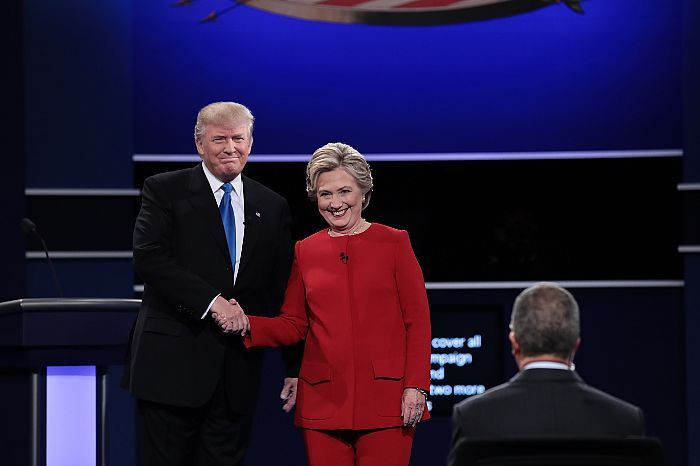Who Has The Better Tax Plan? Donald Trump And Hillary Clinton Policy On Taxes Explained

As part of a larger plan for middle class tax cuts, Democratic presidential candidate Hillary Clinton promised Tuesday to double the child tax credit to $2,000 for families with kids aged four or younger, the Wall Street Journal reported. But what about Trump’s tax policy proposals? Read on, so you can know the tax plan you’re voting for.
Hillary Clinton pledges to help middle and lower income families. Clinton’s campaign site promises that the former secretary of state “will call for imposing a four percent ‘Fair Share Surcharge’ on two out of every 10,000 taxpayers making more than $5 million per year” and will propose broadening the pool of earners impacted by the “Buffet Rule.” Named for investor and billionaire Warren Buffett and proposed by President Barack Obama in 2011, the policy would apply a minimum tax rate of 30 percent on individuals making more than $1 million annually. The “Buffett Rule” isn’t exactly a liberal triumph: It was rejected as a Senate bill in 2012 and not present in Obama’s 2013 budget proposal, as the White House dubbed it more of a “guideline” than a piece of legislation. Time will tell whether Clinton, if elected, takes a more aggressive position.
Clinton’s campaign site also promises she will close loopholes allowing derivative traders to hide their funds in low-tax havens, such as Bermuda and the Cayman Islands. But leaks of the so-called Panama Papers last spring showed that the world’s biggest tax haven—the “New Switzerland,” so to speak—is actually the U.S. Which, for many liberal voters, begs the question: Are Clinton’s tax plans aggressive enough?
Her donors are big banks, businesses and billionaires. Clinton’s donor list carries some big names. JPMorgan Chase & Co., Citigroup Inc. and Goldman Sachs are her third, fourth and fifth biggest funders, with each donating nearly $1 million, according to OpenSecrets. Microsoft Corp., Bank of America, Morgan Stanley and Google parent company Apple also make the top 20. Her super PAC donor list tells a similar story.
Though her plans include a “risk fee” on liabilities for banks with more than $50 billion in assets, many wonder how much influence the megabanks would have on her policies as president. After all, some reports hint that her financial services industry backers may have had a hand in keeping Massachusetts Sen. Elizabeth Warren off of the vice president ticket.
Trump’s tax policies are surprisingly similar—on the surface. His current tax plan, the third and most moderate iteration, borrows generously from a June House Republican tax proposal. He promises to “reduce taxes across the board,” and pledges to favor “working and middle-income Americans” by giving them a “massive tax reduction,” according to his campaign site. But independent groups have found that middle- and lower-income groups would actually see their tax burdens increase under Trump's plan, CNN Money reported. For example, his simplification of the tax code, reducing the number of income brackets from seven to three, would raise the percentage of income tax paid by earners in the lowest bracket from 10 percent to 12 percent.
Trump also promises to “reduce the cost of childcare by allowing families to fully deduct the average cost of childcare from their taxes”—not unlike his opponent’s recent proposal.
But where do they really differ? Clinton pledges to go after the so-called “one percent,” while Trump would lower the corporate tax from its current 35 percent level to 15 percent, according to his campaign.
Another major divide is the Estate Tax, also known as the “death tax,” in which heirs pay the government a large portion of a deceased person’s inheritance before it can be handed down. Clinton wants rates to rise with the dollar value of the estates, to as much as 65 percent, while Trump wants to abolish it altogether, according to their campaign sites.
Trump’s tax plan includes eliminating the estate tax which provides a $353 billion tax break to the top .3% & $4 billion to his own family.
— Bernie Sanders (@BernieSanders) September 27, 2016
They also differ on the issue of capital gains taxes, which investors pay when making money off of their trades. Clinton’s campaign site says she hopes to raise the rate and close loopholes, while Trump wants to maintain the existing structure, with a cap at 20 percent.
© Copyright IBTimes 2025. All rights reserved.






















